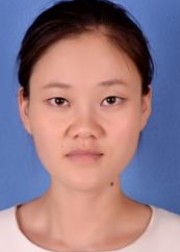| 家教海宁的文章列表 |
|---|
现在完成时 [学习经验]
发表于:2011-11-26 阅读:126次
现在完成时 一、现在完成时用来表示现在之前已发生过或完成的动作或状态,但其结果却和现在有联系,也就是说,动作或状态发生在过去但它的影响现在还存在,也就是说,动作发生在过去,而对现在造成的影响和结果. I have spent all of my money.(现在我没有钱花了.) Jane has laid the table.(现在桌子已经摆好了.) Michael has been ill.(现在仍然很虚弱) He has returned from abroad. (现在已在此地) 二、现在完成时可以用来表示发生在过去某一时刻的,持续到现在的动作(用行为动词表示)或状态(be动词表示)常与for(+时间段),since(+时间点或过去时的句子)连用. ①for+时段 为…时间Mary has been ill for three days. ②since+过去一个时间点(译为:自从……以来)I have lived here since 1998. ③since+时段+ago I have worked here since two years ago. ④since+从句(过去时)I have lived in Shanghai since I was ten years old. ⑤It is+时段+since+从句(过去时)It is two years since I worked here. 三、现在完成时与瞬间动作:瞬间动词如arrive, begin, borrow, buy, come, die, join, leave等可以用于现在完成时,但其肯定式不能和表示一段时间的状语(for…或是since…)连用。如: I have bought a car. (√) I have bought a car for a year. (×) I have bought a car since a year ago. (×) I have had a car for a year. (√) I have had a car since a year ago. (√) 四、构成:肯定句:助动词have/has+过去分词(done) 否定句:have/has+not+过去分词 一般疑问句及应答:Have/Has+主语+过去分词+其他?Yes, 主语 + have/has.(肯定) No, 主语 + haven't/hasn't.(否定) 常用的时间状语有:
already “已经” 肯定句的中间和末尾处 never “从不” 中间处 ever “曾经” 疑问句和肯定句的中间处 just “刚刚” 中间处 yet “已经” 、“还” 疑问句、否定句的末尾处
或不加任何的时间状语,但不能和表示过去的时间状语连用. (一).have(has) been in 表示“在某地呆多长时间”,常与表示一段时间的状语连用,如:since, for, how long 等。例如:Mr. Brown has been in Shanghai for three days. 布朗先生来上海已经有三天了。此外还有这些搭配: have been here (there) /at home (school) /on the farm / abroad (二).have(has)been to表示“曾经去过某地”,现在已经不在那里了。可与just, ever, never等连用,例如: I have just been to the post office. 我刚才去邮局了。 Mary has never been to the Great Wall. 玛丽从未去过长城。 Have you ever been to Hangzhou? 你曾经去过杭州吗? have(has) been to 后面可接次数,表示去过某地几次。例如: I have been to Beijing three times. 我去过北京三次。 They have been to that village several times. 他们去过那个村庄好几次了。 (三).have(has) gone to意为“到某地去了”,表示到了某地或正在去某地的途中。总之,说话时该人不在现场,一般不用第一、第二人称代词作句子的主语。 例如:----Where is Tom? ----He has gone to the bookshop. 汤姆在哪里?他到书店去 Jack Johnson has gone to London. 杰克.约翰逊到伦敦去了。 过去完成时 一.【含义】过去完成时表示在过去某一时间或动作之前已经发生或完成了的动作。它表示动作发生的时间是“过去的过去”。如: He asked if you had written to Peter. 他问你是否给Peter写信了。 二.【结构】① 基本形式:had + 过去分词。如:We had reached the top of the hill before midnight. 在半夜之前我们已登上了山顶。 ② 否定形式:had + not + 过去分词。如:They hadn’t finished the work when we got there. 我们到那儿时,他们还没有完成工作。 ③ 一般疑问句形式:had提到句首,回答用Yes, 主语 + had. / No, 主语 + hadn’t. 如: —Had he told you to go there earlier yesterday? 他昨天告诉过你早点儿到那儿吗? —Yes, he had. (No, he hadn’t.) 是的,他告诉了。(不,他没有。) ④. 被动语态形式:had + been + 过去分词。如: When I got there, the windows had been broken. 当我到那儿时,窗户已经被打破了。 三.【用法】① 用在主句为一般过去时的宾语从句中。如: My father asked me if I had finished reading that book. 爸爸问我是否读完那本书了。 ② 用在“after / before / when + 过去时态从句”或有“by+过去时间”的句子中。如:Mother had already cooked supper before I returned home. 在我回到家前,妈妈已经把饭做好了。 ③ 和由for或since 引导的、表示一段时间的短语或从句连用。如:He had worked in that factory for five years before he moved here.他搬到这儿前已经在那个厂子工作了五年。 |




